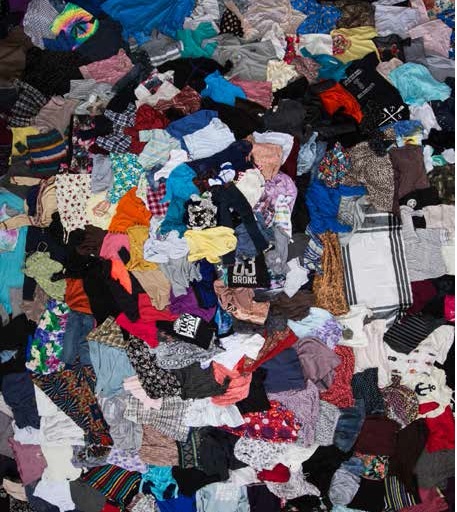Once the pact comes into force, likely in July, Vietnam will get duty-free access to the EU market in garments (apart from dozens of other products), while such supplies from India will continue to be taxed at 9.6%.
Indian garment exporters, already battered by the Covid-19 outbreak, are in for further trouble, as major competitor Vietnam has forged a free trade agreement (FTA) with the EU.
Once the pact comes into force, likely in July, Vietnam will get duty-free access to the EU market in garments (apart from dozens of other products), while such supplies from India will continue to be taxed at 9.6%. This will further harden the challenge for India to even hold on to its market share in garment exports, let alone grab the space being gradually vacated by China. The EU typically accounts for about 30% of India’s garment exports. Of course, with the UK out of the EU now, the bloc’s share in India’s supplies will drop. India’s garment exports dropped 4% year-on-year in FY20 to $15.5 billion.
Importantly, all of India’s key competitors – Bangladesh, Sri Lanka, Cambodia and Pakistan – currently ship out apparel to the EU at zero duty, as they continue to get preferential treatment. Supplies of certain types of apparel from Cambodia, of course, may be taxed from August, as the EU has reportedly withdrawn preferential tariff treatment to products making up for one-fifth of its imports from that country. Still, exporters say Cambodia will continue to gain due to the investments made in the country by the Chinese.
While the EU slaps a 12% import duty on Chinese garments, slightly higher than that on India, Beijing undoubtedly remains far more competitive than New Delhi and offers an impressive range of apparels.
According to the European Commission data, between 2016 and 2019, Vietnam’s garment exports to the EU went up from 2.61 billion euros to 3.29 billion euros, while India’s continued to decline from 4.47 billion euros to 4.31 billion euros. In fact, India was the only country among five key exporters (the others being Bangladesh, Vietnam, Cambodia and Pakistan) whose garments supplies to the EU dropped in the past four years.
While China’s apparel exports to the EU dropped marginally from 25.21 billion euros to 25.03 billion euros, India’s fall was sharper. This suggests that while China has been seeking to gradually shift from labour-intensive industries like garments to capital-intensive and high-tech ones, India clearly hasn’t gained from this; rather, it has ceded its share in exports to its peers in recent years.
Even Cambodia’s exports to the EU rose from 2.71 billion euros in 2016 to 3.30 billion euros in 2019, Bangladesh’s rose from 12.62 billion euros to 15 billion euros and Pakistan’s increased from 2.23 billion euros to 2.70 billion euros.
“The clear tariff differential in the EU market will add to our already-stark disadvatages in other areas (logistics costs, etc) and further erode our competitiveness vis-à-vis Vietnam,” said Gautam Nair, managing director at Matrix Clothing, one of the country’s largest apparel exporters.
“Vietnam’s FTA with the EU will be another blow to the Indian garment exporters. What we need is no quick-fixes but a long-term vision. Promoting garment clusters, initiating structural reforms and tailoring policy interventions accordingly will be a way forward,” said Raja M Shanmugham, president of the Tirupur Exporters’ Association. Tirupur is the country’s largest garment export hub, having recorded outbound shipments of around Rs 25,000 crore in FY20.
Flagging the threat to export competitiveness, the Debroy panel had earlier said India’s logistics costs alone accounted for as much as 15-16% of the consignment value. Also, as pointed out in an earlier report by HSBC, India’s domestic bottlenecks explain 50% of the recent slowdown in overall exports (remaining the biggest threat to its outbound shipments), followed by world growth (33%) and the exchange rate (just 17%).
Meanwhile, after 16 rounds of talks between 2007 and 2013, negotiations for an India-EU FTA have been stuck due to differences over the bloc’s demand for a sharp cut in tariffs on auto parts and wine by New Delhi, among others. Both the sides, however, were trying to revive the trade talks earlier this year when the Covid-19 hit, forcing authorities to shift focus to tackling the pandemic.
Source: Financial Express








